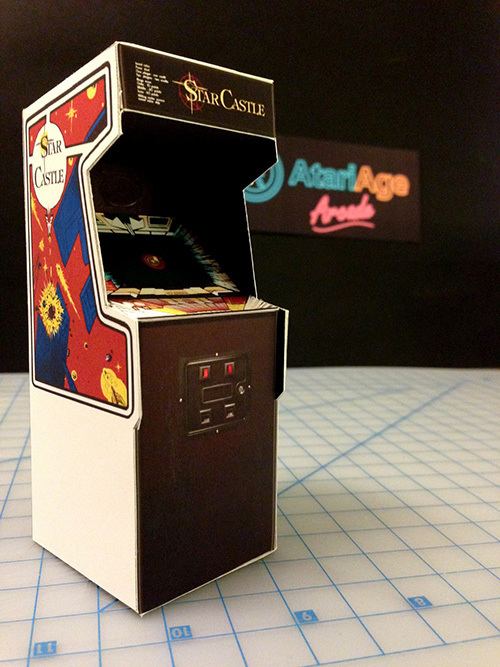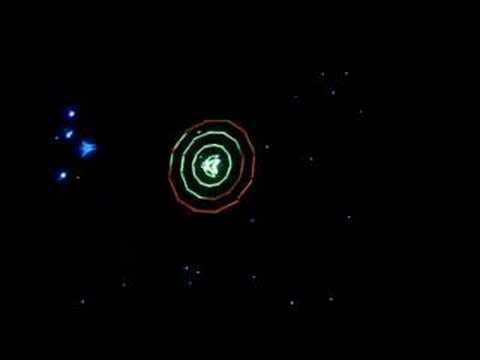Programmer(s) Scott Boden Initial release date 1980 | Cabinet Upright | |
 | ||
Genre(s) Multi-directional shooter Mode(s) Up to two players, alternating turns Display Vector, standard resolution, horizontal orientation Similar Cinematronics games, Shoot 'em up games | ||
Star Castle is a 1980 vector arcade game by Cinematronics. The game involves obliterating a series of defenses orbiting a stationary turret in the center of the screen. The game was designed by Tim Skelly and programmed by Scott Boden. Skelly also created a number of other Cinematronics titles, including Starhawk, Armor Attack and Rip-Off. A port of Star Castle for the Vectrex was released in 1983.
Contents

The game is black and white with the colors of the rings and screen provided by a transparent plastic screen overlay.

Classic game room star castle arcade machine review
Gameplay

The object of Star Castle is to destroy an enemy cannon which sits in the center of three concentric, rotating energy shield rings while avoiding or destroying 'mines' – enemies that spawn from the core, pass through the energy rings, and then home in on the player's ship. They can stick back to the shield if the player maneuvers in such a way that a ring is between the ship and the mines. The player-controlled spaceship can rotate, thrust forward, and fire small projectiles. The cannon's shields are composed of twelve sections each, and each section takes two hits to destroy. Once a section is breached, rings beneath it are exposed to fire.
Once the innermost ring has been breached, the central weapon is vulnerable to attack from the player. However, the player is also more vulnerable at this point, as with the shield rings eliminated, the gun can fire out a large projectile that hisses with white noise. Moreover, the central core tracks player movement at all times. If the player manages to hit the cannon, it explodes violently, collapsing the remnants of the shield rings, and the player is awarded with an extra ship. The next level then starts with a new gun and fully restored shield rings, with the difficulty increased (the mines move faster, the rings rotate more quickly, and the core tracks the player faster).

If the player completely destroys the outermost shield ring, the cannon will create a new one. The middle ring expands to replace the lost outer ring, the inner ring replaces the middle, and a new ring emerges from the core to become the inner ring. Therefore, in order to penetrate the cannon's defenses, the player must be careful not to completely obliterate the outer ring.
The three homing mines will destroy the player's ship on contact. The mines can be destroyed, but they are very small and difficult to fire on, and the player does not receive points for destroying them. Mines are revived when shield rings regenerate (some variants keep three mines churning constantly so that a new mine respawns from the core as soon as one is destroyed). As the player progresses through the levels, the mines get faster and faster, forcing the player to keep moving to avoid them.
Development
The development of the game was chronicled in an issue of the now-defunct magazine Science 80.
Legacy
Star Castle was an inspiration for Atari's Yars' Revenge (1982) for the Atari 2600.
D. Scott Williamson created a clone of Star Castle for the Atari 2600 game console, a task that was originally thought impossible by Howard Scott Warshaw, developer of Yars' Revenge. Completed in 2012, it was made available as limited edition physical cartridge with box art and instruction manual.
In the 1986 movie Maximum Overdrive, a Star Castle machine electrocutes a person to death in the arcade.
